Upper Control Arm Ball Joint Replacement Rear Wheel Drive
Removal Procedure
Tools Required
J 23742 Ball Joint
Separator
Caution: Floor jack must remain under the lower control arm during
removal and installation to retain the lower control arm in position. Failure
to do so could result in personal injury.
- Raise the vehicle. Refer to
Lifting and Jacking the Vehicle
in General Information.
- Place safety stands under the lower control arm between the spring
seat and the lower ball joint.
- Remove the tire and wheel assembly. Refer to
Wheel Removal
in Tires and Wheels.
- Remove the cotter pin, the nut, and the grease fitting.
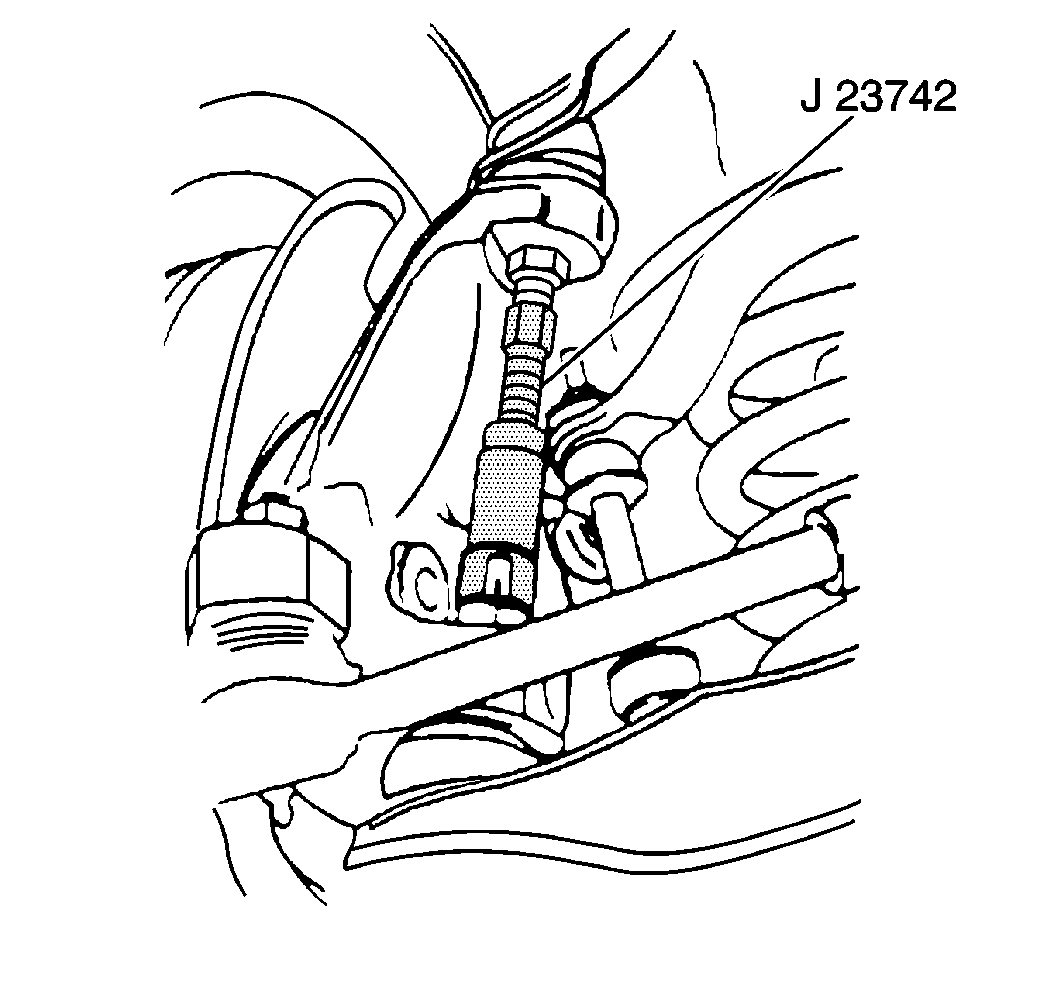
- Disconnect the steering
knuckle from the upper ball joint.
| 5.1. | Use the J 23742
in
order to break the steering knuckle free from the upper ball joint. |
| 5.2. | Pull the knuckle free from the upper ball joint after the J 23742
is removed. |
| 5.3. | Support the steering knuckle/hub assembly in order to prevent
the knuckle weight damaging the brake hose. |
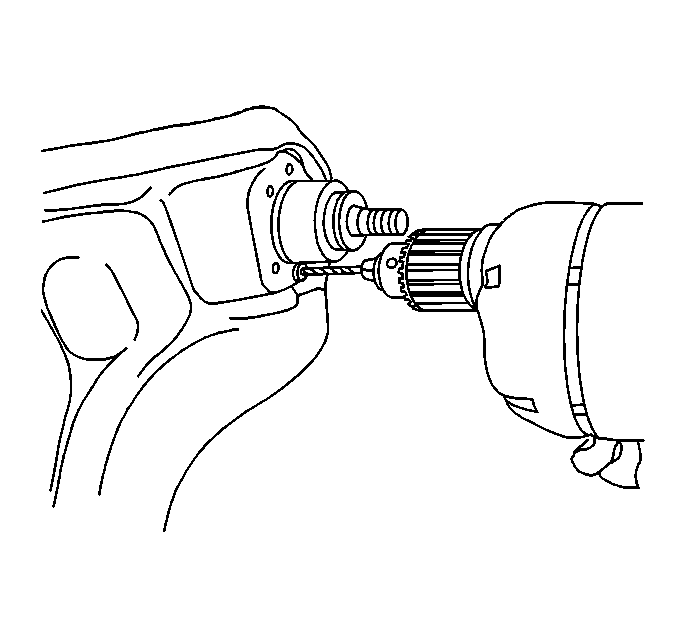
- Use a 3.175 mm
(1/8 in) drill bit in order to cut 6.35 mm (¼ in)
deep holes in the center of each rivet head.
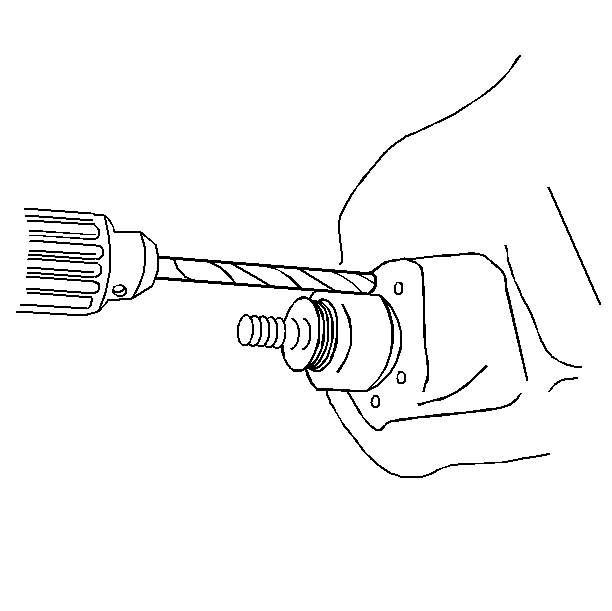
- Drill away the rivet heads
using a 13 mm (½ in) drill bit.

- Using a small pin punch,
punch out the rivets and remove the upper ball joint from the upper control
arm.
Installation Procedure
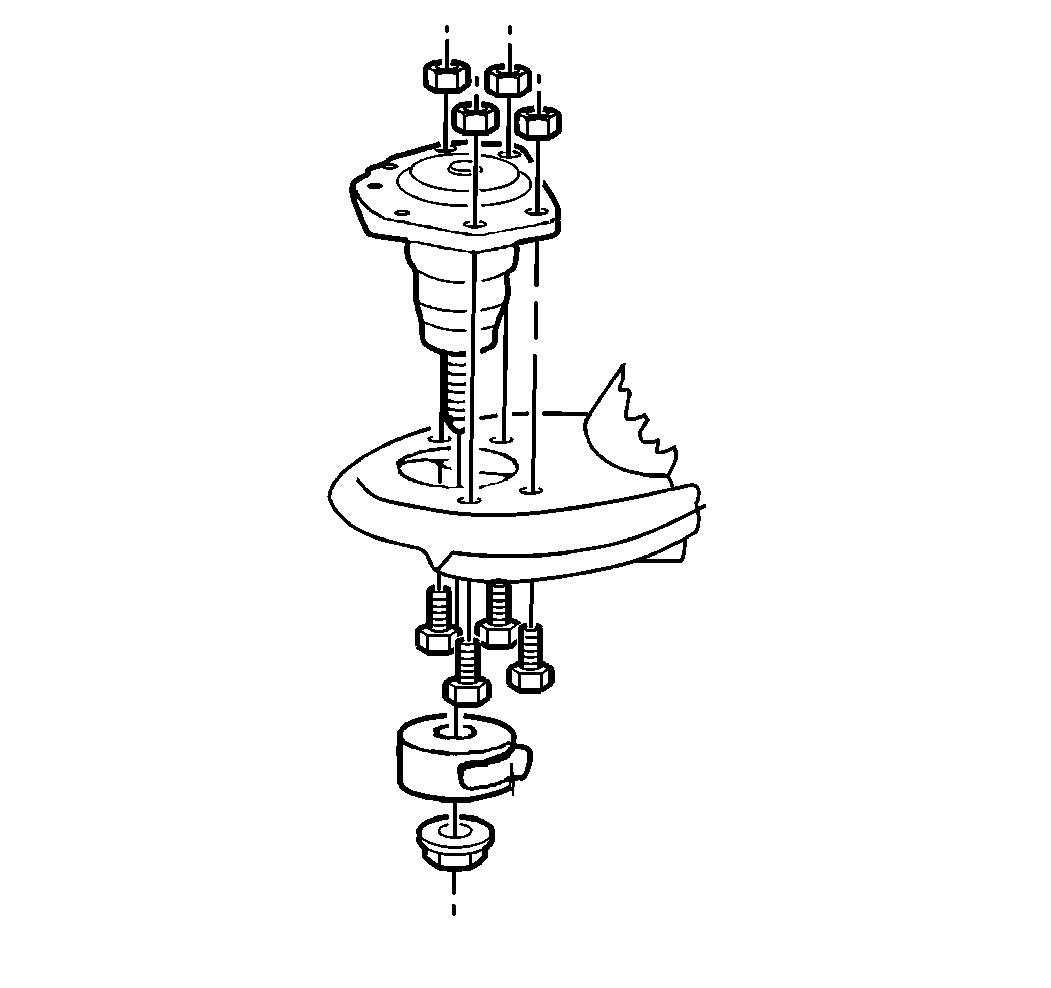
Notice: Use the correct fastener in the correct location. Replacement fasteners
must be the correct part number for that application. Fasteners requiring
replacement or fasteners requiring the use of thread locking compound or sealant
are identified in the service procedure. Do not use paints, lubricants, or
corrosion inhibitors on fasteners or fastener joint surfaces unless specified.
These coatings affect fastener torque and joint clamping force and may damage
the fastener. Use the correct tightening sequence and specifications when
installing fasteners in order to avoid damage to parts and systems.
- Install the upper
ball joint into the upper control arm. Position the ball joint into the upper
control arm, and install the four attaching bolts and nuts.
Tighten
Tighten the nuts to 30 N·m (22 lb ft).
- Connect the upper ball joint to the steering knuckle.
| • | Remove the temporary support from the steering knuckle. |
| • | The upper ball joint must be fully seated into the steering knuckle. |
- Install the stud nut.
Tighten
Tighten the nut to 85 N·m (65 lb ft).
- Install a new cotter pin. Tighten the nut up to an additional 1/6
amount in order to insert the cotter pin through the upper ball joint stud.
Bend the pin ends flat against the nut flats.
- Install the upper ball joint grease fitting.
- Using a grease gun, grease the upper ball joint until grease appears
at the upper ball joint grease seal.
- Install the tire and wheel assembly. Refer to
Wheel Installation
in Tires and Wheels.
- Adjust the wheel bearings. Refer to
Wheel Bearing Adjustment
.
- Lower the vehicle.
- Check the front wheel alignment. Refer to
Wheel Alignment Specifications
in Wheel Alignment.
Upper Control Arm Ball Joint Replacement Full-Time Four-Wheel Drive
Removal Procedure
Tools Required
J 36607 Ball Joint
Separator
- Raise the vehicle. Refer to
Lifting and Jacking the Vehicle
in General Information.
- Remove the tire and wheel assembly. Refer to
Wheel Removal
in Tires and Wheels.
- Unload the torsion bar. Refer to
Torsion Bar Replacement
.
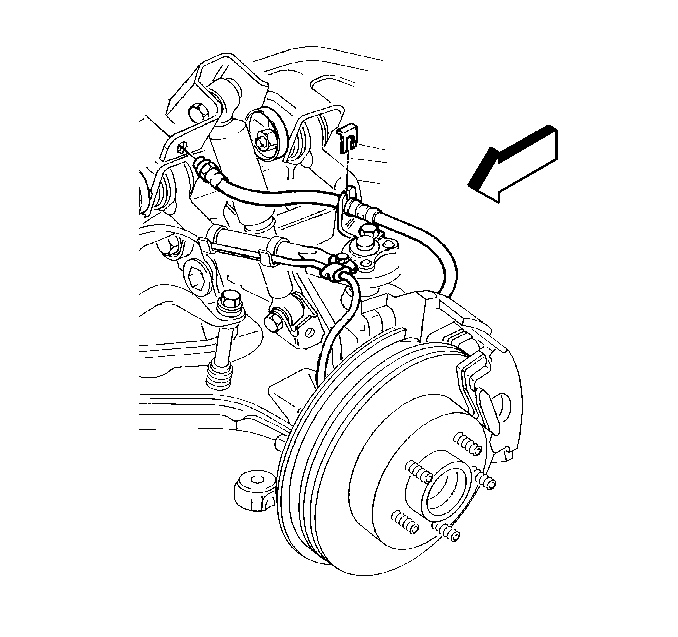
- Remove the brake hose
from the upper control arm.
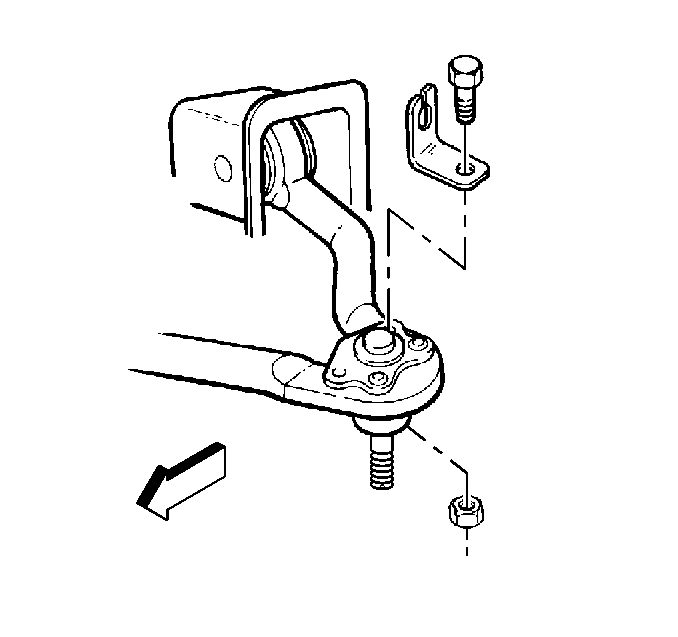
- Remove the brake hose
bracket from the upper control arm.

- Remove the speed sensor
bracket from the upper control arm.

- Remove the rivets from
the ball joint. Use a 3.175 mm (1/8 in) drill bit to cut
a 6.35 mm (¼ in) deep hole in the center of each
rivet.

- Drill the rivet heads
away using a 13 mm (½ in) drill bit.

- Using a pin punch, remove
the rivets.
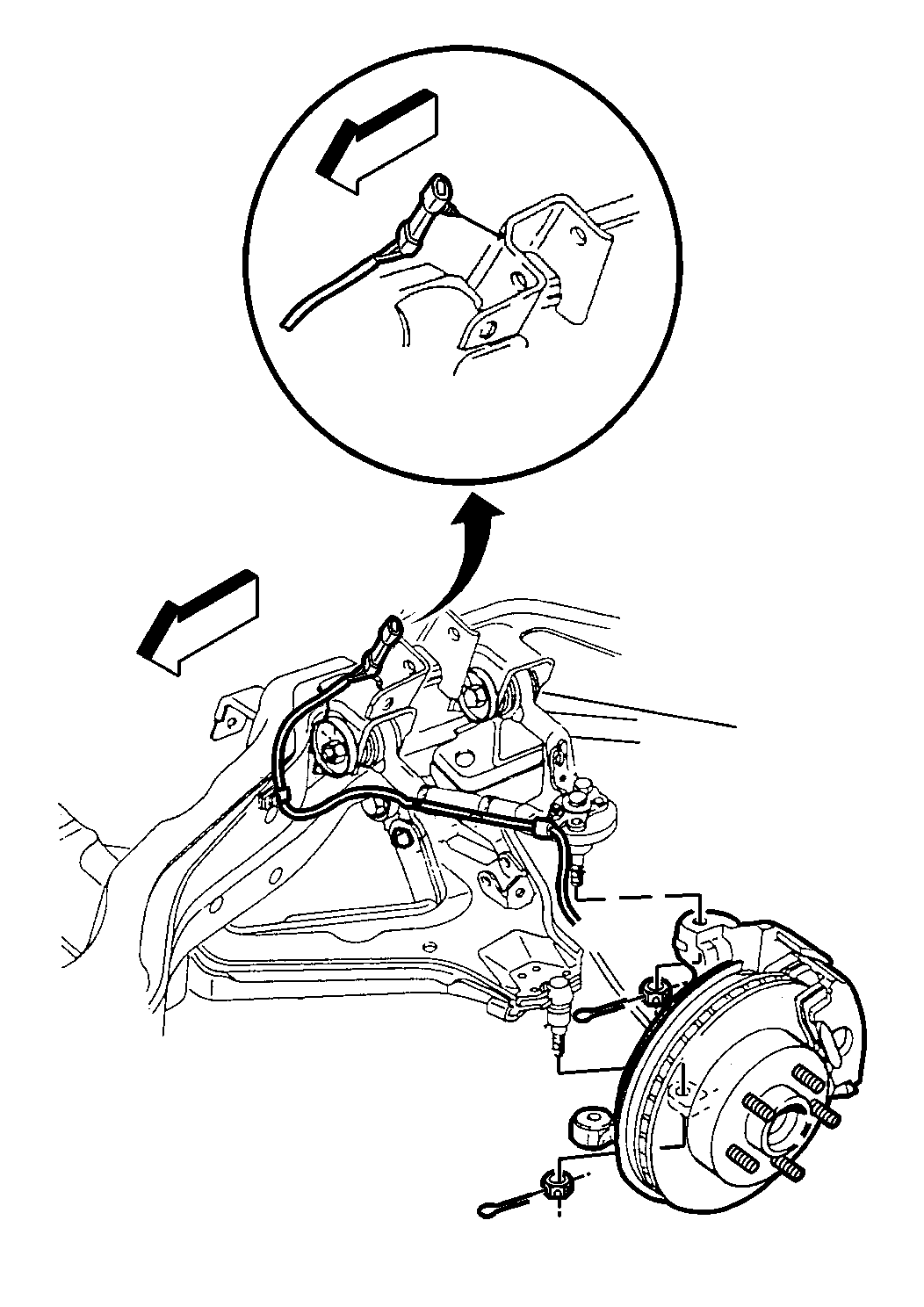
- Remove the cotter pin.
- Remove the nut.
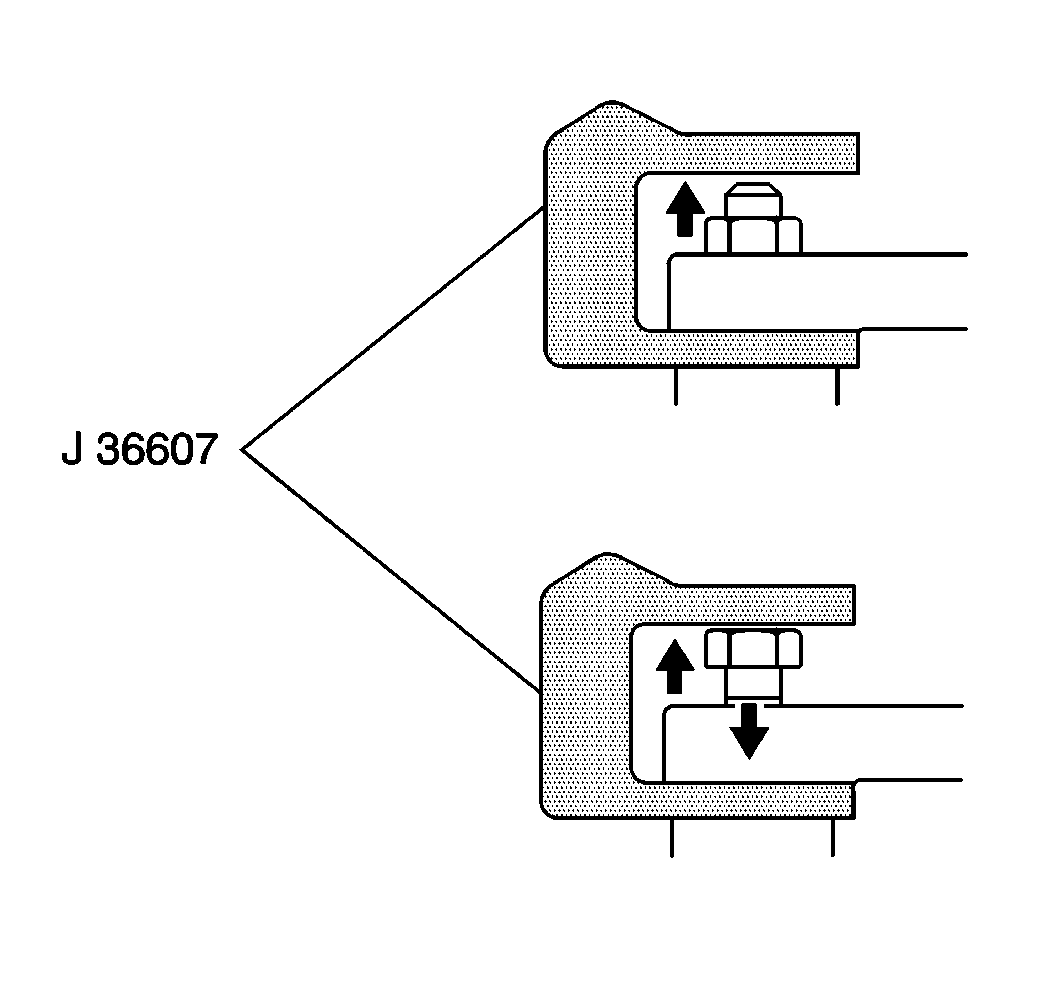
- Disconnect the ball joint
from the knuckle using the J 36607
. Support the knuckle.
- Remove the ball joint.
Installation Procedure
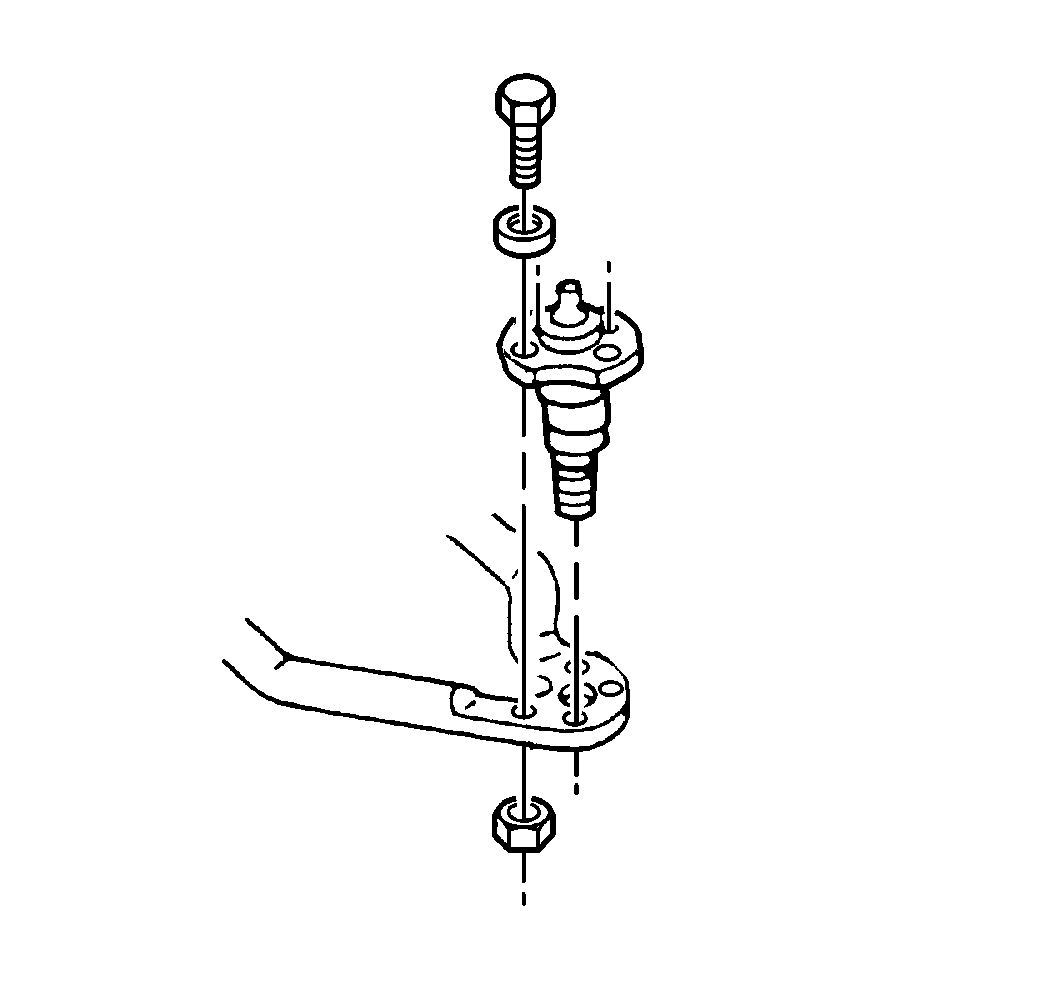
- Install the ball joint
in the upper control arm.

- Install the speed sensor
bracket.

- Install the brake hose
bracket.
Notice: Use the correct fastener in the correct location. Replacement fasteners
must be the correct part number for that application. Fasteners requiring
replacement or fasteners requiring the use of thread locking compound or sealant
are identified in the service procedure. Do not use paints, lubricants, or
corrosion inhibitors on fasteners or fastener joint surfaces unless specified.
These coatings affect fastener torque and joint clamping force and may damage
the fastener. Use the correct tightening sequence and specifications when
installing fasteners in order to avoid damage to parts and systems.
- Install the bolts
and the nuts to the ball joint.
Tighten
| • | Tighten the brake hose bracket nut to 16 N·m (12 lb ft). |
| • | Tighten the wheel sensor bracket nut to 16 N·m (12 lb ft). |
| • | Tighten the upper ball joint nuts to 30 N·m (22 lb ft). |

- Connect the ball joint
to the knuckle.
- Install the nut.
Tighten
| • | Tighten the nut to 90 N·m (66 lb ft). |
| • | Tighten the nut with the control arm at Z height. Refer to
Trim Height
in Suspension General
Diagnosis. |
- Install a new cotter pin. Tighten the nut up to an additional 1/6
amount in order to insert the cotter pin through the upper ball joint stud.
Bend the pin against the nut flats.

- Install the brake line.
- Using a grease gun, grease the upper ball joint until grease appears
at the upper ball joint grease seal.
- Load the torsion bar. Refer to
Torsion Bar Replacement
.
- Install the tire and wheel assembly. Refer to
Wheel Installation
in Tires and Wheels.
- Lower the vehicle.
- Check the front wheel alignment. Refer to
Wheel Alignment Specifications
in Wheel Alignment.


















